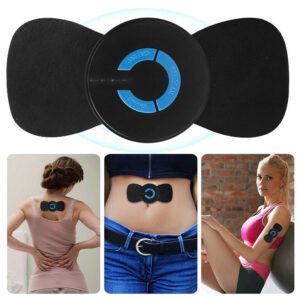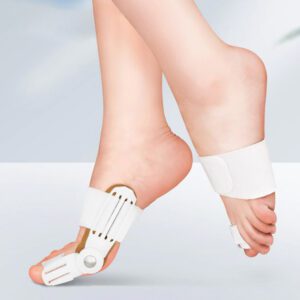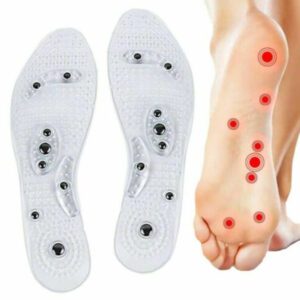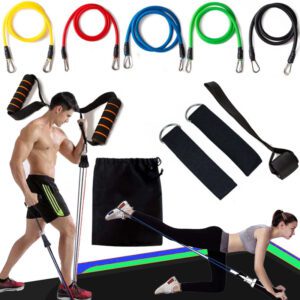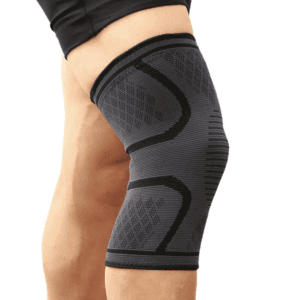Knee braces are a popular way to help people with knee pain. But do you really know how they work? In this article, we’ll go over the basics of how compression works to relieve pain and speed up the healing process. We’ll also discuss when knee braces are most effective and when other treatments might be necessary. So read on to learn everything you need to know about knee braces.
Knee pain is the number one reason people are talking to their doctor. And knee braces or knee sleeves are among the most popular treatments for it. So how do they work?
The human knee consists of bones, ligaments, muscles, tendons and cartilage. If this vulnerable structure gets damaged, a knee brace can provide stability, support and protection to relieve pain and enhance the recovery or healing process. There are different kinds of knee braces and knee sleeves on the market for different purposes. But generally, all of them help to prevent and protect the knee while relieving and controlling the pain. These functions make it possible for you to stay active and get back on track faster.
Does a knee brace really help?
Knee braces come in a bunch of different types. Depending on the injury or condition, they can be a perfect fit or might not work at all. There are just too many variables, but given the low-cost investment of many braces or knee sleeves around, you still might want to test them out.
Both knee braces and knee sleeves are great to treat short-term as well as long-term injuries and conditions. Health professionals often recommend wearing a knee brace after surgery or knee injury to protect the affected knee and to speed up the recovery and healing process.
So what’s the magic ingredient, you ask? It’s all about compression!
Why does compression help knee pain?
There are three types of compression: tourniquet, hydrostatic and gradient. Tourniquet compression restricts blood flow throughout an entire leg or arm. Hydrostatic compression allows tissue fluids to flow, but not the blood. And gradient compression is when each layer squeezes deeper into your body than the next one, allowing your muscles and bones to get extra support while moving around.
When you wear a knee brace or knee sleeve, it applies compression to increase blood flow in the area. This makes it possible for fresh blood and nutrients to get to your muscles and tissue, which reduces recovery time. It also decreases swelling and inflammation in the knee joint, which immediately eases pain.
But there’s even more! The compression in a knee brace or knee sleeve is designed to mimic deep tissue massage by applying pressure when your body needs it most. When you put pressure on your body, the pressure gets released as you move away. This stimulates natural healing processes in your muscles and tissue that reduce pain and speed up recovery time.
In addition to stimulating blood flow, the compression in a knee brace or sleeve reduces stiffness, muscle spasms and scar tissue build-up. As a result, you’ll get enhanced strength and stability in your knee while staying safe and active. But how much compression do you need?
How much compression is ideal for a knee brace or sleeve?
If you think all knee braces and sleeves are the same, think again! Some provide more support than others. Generally, if you choose a knee brace or sleeve that provides 20-30mmHg of compression, you’ll get optimal support and all-day comfort.
But pressure is not universal! Different types of athletes need different amounts of compression. So it’s important to test out a few knee braces or sleeves until you find one that works for your needs. For example, if you’re an amateur athlete who wants more support while working out and playing some sports, you can go for a slightly tighter brace or sleeve than someone who just wants to wear it around the house.
The good news is that most braces and sleeves on the market today come with adjustable compression straps! So you can get your perfect fit that stays in place all day long. It’s also very important to know that compression is not the only factor you need to consider when buying a knee brace or sleeve.
What else should I look out for in a knee brace?
Choosing the right kind of knee brace or sleeve means looking at your injury and what exactly you need. Always consult with your doctor, physical therapist or trainer before choosing a product. For example, if you suffer from patellar femoral pain syndrome, which is often caused by weak hips and glutes, you might want to look for a product that focuses on correcting your movement patterns and training better overall body mechanics.
In addition to getting the support you need, it’s also important to choose a breathable knee brace or sleeve. Remember, compression alone will not stop your knee from swelling. So you want to make sure the brace or sleeve you choose is made out of a material that breathes and lets moisture wick away.
When it comes to fabric, neoprene is an excellent option for breathability and natural support. Latex-free neoprene can keep your skin dry while you work out, play sports or go about your daily activities. It also lets air circulate while retaining heat, which makes it a great choice for all-day comfort and support.
How long should you wear a knee brace at a time?
The short answer is: It depends.
Compression and support work in different ways, so it’s difficult to give a one-size-fits-all answer. For example, if you’re wearing your knee brace or sleeve while taking part in an athletic competition, you want to keep it on for as long as possible without experiencing any discomfort or irritation.
But when you wear a knee brace or sleeve for too long, it can cause increased blood flow and swelling in your knee joint. And if you’re not keeping your leg active while wearing the brace, the muscles in your thigh will start to weaken and atrophy because they haven’t been firing during normal activities.
It’s also important to remember that applying too much compression can do more harm than good. In fact, if you wear a knee brace or sleeve that provides too much support, it can actually decrease your range of motion and slow down the healing process!
That’s why it’s always important to consult with a doctor or physical therapist before choosing a knee brace or sleeve. They can let you know what kind of product will work best for your specific injury and recovery needs.
Now that you know more about how knee braces, sleeves or supports work, go out there and find the one that’s right for your individual body type. With adjustable compression straps to get your perfect fit and high-quality fabrics like neoprene to provide compression and support, you’ll feel better in no time.
You can purchase knee braces, sleeves or supports at your local pharmacy or sports store, but they are also available online here at BaronActive.com.
How tight should a knee brace be?
One size does not fit all when it comes to braces, sleeves and supports. Because every body is unique in shape and size, finding a comfortable yet effective fit can be a challenge. That’s why most braces, sleeves or supports come with adjustable compression straps that let you get the best custom fit possible for your specific body type.
For most braces and sleeves, you’ll want to start with some general guidelines:
- Generally, a knee brace or sleeve will provide the most support when you wear it as tight as possible without experiencing any pain.
- If your brace is too loose, it won’t give you the kind of compression and support you want to relieve your discomfort and swelling.
- Remember, when you choose a brace or sleeve that fits too tightly, it can actually do more harm than good. So when in doubt, err on the side of loosening your compression straps until you find the right fit for your unique body type.
- But if it’s too loose and doesn’t provide the kind of support you need, tighten the compression straps until you find the best fit for your specific body type.
- While an adjustable knee brace can give you the right amount of support and compression, a wrap or removable sleeve will only provide as much support as it is designed to do. Many wraps and sleeves come with many layers of padding so they naturally offer more compression than braces. But if you need more compression than what your wrap or removable sleeve can provide, go with a knee brace.
Should a knee brace be worn at night?
It’s not a good idea to wear your knee brace or support at night while you’re sleeping. If you sleep on your stomach, the brace will be positioned right under your patella (kneecap) and can cause discomfort that disturbs your rest.
If you sleep on your side, you want the kneecap to move freely while you’re resting, so it’s best not to wear a brace while you sleep.
But if your nighttime rest is disturbed by swelling or discomfort in your knee joint, wearing the brace during the day and taking it off at night may be the best way to get relief so you can finally get some restorative sleep.
Only if you can’t take the pain at night and have a hard time falling asleep, you can wear your knee brace for the first few days. But don’t wear it during the night for longer than two weeks. If pain continues to be a problem at night after you take off your brace, talk to your doctor or physical therapist about other types of treatment options.
How do I make my knee brace stay up?
Besides the common-sense advice of not wearing a brace with pants that are too baggy, here are some simple tricks to help your knee brace stay up.
First, if you’re wearing a wrap or removable sleeve with several layers of padding, go with one size smaller than what is recommended for your body type. The extra padding adds bulk and makes it less likely you’ll be able to get your knee brace to stay up.
Second, if you’re wearing an adjustable knee brace with compression straps, start by tightening the top strap first. This is typically above or around your kneecap, so it should help keep the lower part of the brace in place (especially with a snug fit).
Third, make sure the brace isn’t too big. If it’s too big for your body type, it won’t stay in place as well as a brace that fits better.
Fourth, wear pants that fit snugly around your knee and over top of the brace. Anything baggy will dangle and get in the way of keeping your brace up.
Finally, if you can’t seem to get your knee brace to stay up and it keeps slipping down no matter what you do, take a look at the material over the front of your kneecap. If that mesh-like material is flimsy or torn, your brace will never stay in place. It’s best to replace your knee brace if this is the case.
How do I know what size knee brace I need?
Most if not all manufacturers, sellers and online shops will provide proper size charts. Some shops recommend the sizes by body weight. However, in most cases, this is not the appropriate way to measure the perfect size.
Good sellers and products always show thigh circumference measurements. Generally, you should measure your thigh circumference around 4 inches / 10 cm above your knee cap. Then you can easily check the size chart and choose the size that suits you best.
If you’re in between two sizes, this is a choice of personal preference. If you want the brace to be a bit tighter and provide more support, compression and stability, go with the smaller size. And if you want the brace to fit a bit looser and therefore more comfortable, order the brace a size up.
When should you use a knee brace?
You should use a knee brace if you have an injury or suffer from pain, swelling or stiffness after an injury. Pain and swelling occur because of inflammation in the knee joint. The body tries to heal itself by sending fluid with powerful anti-inflammatory drugs around the injured area.
Wearing a brace provides compression on the knee joint so it can heal itself more quickly. The pressure of the knee brace around the joint stimulates blood flow, which reduces swelling and relieves pain.
Some people wear a knee brace after surgery to protect their healing joints while they are still weak from the injury or the surgical procedure.
You can wear a knee brace while staying at home, lying on the couch or while doing light housework. In most cases, it’s recommended to wear a brace during sports or workouts because it will get in the way of your natural movements. Knee braces limit the range of motion and can help by not allowing the knee to do a full bend or stretch.
Start by wearing the brace for 20-30 minutes and then take it off for at least another 30 minutes. Gradually increase usage time to about two hours per day and then give your body a rest.
If you suffer from persistent knee pain, stiffness or discomfort while wearing the brace, you can wear it overnight while sleeping. This will not only provide compression and support but also relieve pressure on your injured joint. It’s important to remember that once you start using the brace for more than two hours per day, reduce usage time by 15-20 minutes each day.
In the long run, knee braces are great for protecting your knees while exercising or even doing activities around the house. If you do not have any specific health conditions and simply want to support your knees so they last longer, invest in a knee brace to protect yourself against sudden injuries.
When shouldn’t you use a knee brace?
Never use a knee brace if you have an open wound or skin irritation. Although braces provide compression and support, they may cause skin rashes and irritations because of the material the knee brace is made of.
How do you properly wear a knee brace?
Always make sure your brace fits properly. The top of the knee brace should be about 20 cm above your knee cap and just below your patellar tendon. If you wear a strap around your calf, it’s best to tighten it so it’s flush with the brace.
Another common mistake is wearing a knee brace that is too loose or too tight. If you have trouble figuring out the right fit, buy a knee brace with adjustable straps around your thigh and calf.
When wearing a knee brace for the first time, make sure you are sitting down on a chair or couch. Put one foot flat on the ground and pull your pants leg up to about 20 cm above the injured area. Then put on the brace so it’s positioned directly over the knee.
The next step is to tighten the straps so they are equally tight around your leg, starting with the thigh strap first. Follow by pulling on the calf strap until it feels comfortable. If you experience any pain or discomfort wearing a knee brace, don’t hesitate to contact a doctor or physiotherapist. You can wear a knee brace during the day and at night if you work from home or have issues with swelling. If you play sport, it’s best to wait until after the sports session before wearing a knee brace for support and compression.
Knee braces are also great for preventing injuries – specifically, ACL injuries. Some studies show that well-fit knee braces can reduce the risk of non-contact ACL injuries by as much as 50 percent. Check with your doctor before wearing any type of brace if you have had surgery on your knee or are recovering from a recent injury.
Can you wear a knee brace over pants?
The ideal way to wear a knee brace is under your clothes, so people won’t notice you are wearing one. If you have an open wound on your knee or if the brace irritates your skin, keep it away from your skin by covering it with clothing – but make sure the clothing doesn’t restrict the movement of the joint.
If you don’t want to wear your brace under your clothes, you can also wear it over pants. Make sure the knee brace is high enough so no part of it pokes out from underneath your clothing. Also, keep in mind that wearing a knee brace over your clothing may cause irritation or pain on your skin because the brace will be tighter than if you wear it under your clothing.
Final Thoughts on
Knee braces can be a cheap fix to stop knee pain, prevent injuries and improve your quality of life. Always check with a doctor or physiotherapist on which type of brace will provide the best results for you.
For pain relief, compression helps reduce pressure on the knees. The ideal knee brace should be comfortable enough to wear for many hours without causing any discomfort or pain.
If you are looking for a cheap fix to get rid of your knee problems, consider buying a knee sleeve or support. You can find some great options here in our store.
Comment below to let us know what you think of knee braces or share this article with your friends to help them learn more about how knee braces might benefit them living an active lifestyle.












